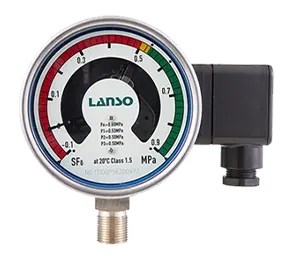How to Verify SF6 Gas Density Relays?
Since SF6 gas density relays are typically installed alongside switches in the field and are not easy to disassemble, as frequent disassembly can lead to interface damage and gas leakage, the verification of density relays is mainly carried out in the field. Therefore, when selecting instruments for verifying SF6 gas density relays, the following criteria should be met:
Must be capable of on-site verification.
SF6 density relays should be verifiable without the need for disassembly whenever possible.
Automatic conversion to values at 20°C should be possible. Manual conversion through curve lookup is not only less accurate and inadequate but also time-consuming and labor-intensive.
SF6 gas must be used directly for verification. The most important reason is that during on-site verification, other gases, such as air, should not be introduced into SF6 electrical equipment to avoid issues like increased moisture in the equipment.
The verification process should have a fully enclosed SF6 gas circulation system while not wasting the SF6 gas within the equipment. Wasting the gas inside the equipment can lead to a decrease in internal pressure, which should be avoided. Used SF6 gas may also be toxic and can pollute the environment if leaked into the atmosphere.
Transition joints for various domestic and imported switches and instrument refilling joints should be provided.
Temperature should be well balanced during verification.
Why Regularly Verify SF6 Gas Density Relays?
SF6 gas density relays, like other pressure gauges, experience drift in their alarm and lockout values after a period of use. In addition, temperature compensation materials may deform due to aging, leading to significant errors in alarm and lockout values. Furthermore, because density relay contacts do not operate frequently, they may become less sensitive or fail to function properly. This hidden issue can directly result in a major accident if the SF6 switch leaks gas, causing the internal pressure to drop below the alarm or lockout values without timely warning or lockout. Therefore, regular verification is necessary.
Quality issues with density relays often arise due to the following reasons
Insufficient shock resistance, leading to issues such as pointer jamming, permanent contact failure (no action or continuous action), and excessive deviation after strong switch operations.
Reduced shock resistance due to oil leakage, resulting in problems like pointer jamming, permanent contact failure (no action or continuous action), and excessive deviation after strong switch operations.
Commonly used relays with magnetic-assisted electrical contacts have small contact closure force and slightly longer operating times, which can lead to contact failure or unreliable contact. For oil-immersed relays, even though the magnetic-assisted electrical contact contacts are immersed in silicone oil, after several operations over time, their contact performance can deteriorate. In addition, the insulating properties of the oil film can lead to poor or no contact.
Manufacturing quality issues, inaccurate temperature compensation, and significant deviations.
Inadequate aging resistance or material issues that result in drift and significant accuracy deviations, rendering the density relay unusable.







